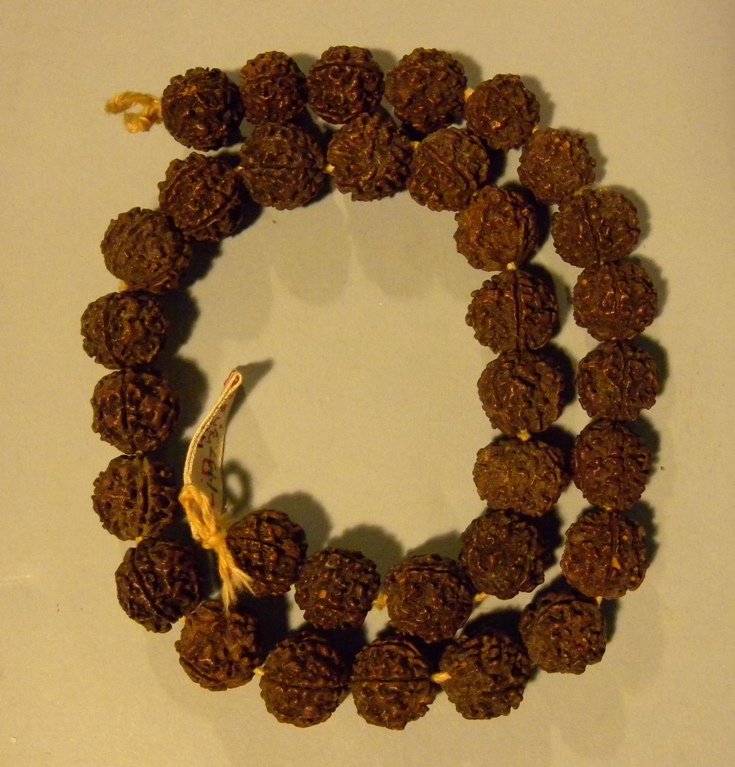Indian prayer beads or “Mālā,” c. 1930s, Rudraksha fruit pits, Gift of Judge John Webb Green and Ellen McClung Green, 1957.3.118
Many large religions across the globe share a use for prayer beads. Most notably to the Western viewer might be Catholic rosary beads. In India, the material of prayer beads or Mālā show the wearer’s affiliation with a specific god or sect in Hinduism (although Jainism, Sikhism, and Buddhism have been known to also use the Mālā). This necklace is made out of the seeds of a rudraksha tree and was most likely worn by a devotee of the god, Shiva. Shaivites wear the strand usually to aid in the recitation of mantras or texts, but can be also be adorned as a symbol of protection. The rudraksha tree stands as a reminder of when Shiva awoke after a long period of yogic meditation and shed a single tear. The tear fell to earth and sprouted the first rudraksha tree.

